Table of Contents
IMAGINARY OLYMPICS
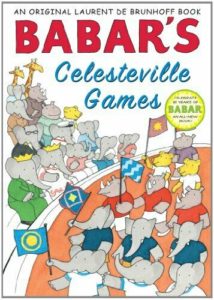
|
In Laurent de Brunhoff’s Babar’s Celesteville Games (Abrams Books for Young Readers, 2011), Babar, the green-suited king of the elephants, and family are hosting the Worldwide Games – and in the midst of all the exciting athletic activity, daughter Flora falls in love with Coriander, a pole-vaulter from the distant country of Mirza. Despite some initial struggles with cultural differences (mother Celeste worries that Cory has small ears; Cory’s parents wish he’d picked a nice girl from Mirza), the book ends with a happy international wedding. For ages 4-6. |
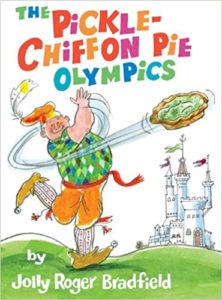
|
In (Jolly) Roger Bradfield’s The Pickle-Chiffon Pie Olympics (Purple House Press, 2001), lovely Princess Sierra is home from Princess College and her father, the king, decides to hold an athletic competition to decide who will win her hand in marriage. The Olympics, 14th-century-style, involve dragon wrestling, a giant climb, a moat swim, and a discus throw involving pickle-chiffon pies. This is the sequel to the equally hilarious Pickle-Chiffon Pie (originally published in 1967, re-issued in 2004). Whacky fun for ages 4-7. |
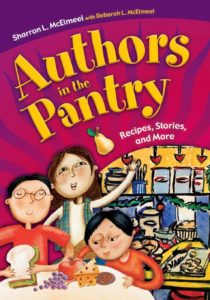 |
By Sharon and Deborah McElmeel, Authors in the Pantry (Libraries Unlimited, 2006) contains a recipe for pickle-chiffon pie. |
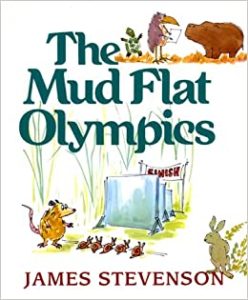
|
James Stevenson’s 56-page chapter book The Mud Flat Olympics (Greenwillow, 1994) is the funny and delightful story of an all-animal Olympics, featuring such events as the Deepest Hole contest (Kimberly, a mole, claims to have burrowed to China), the All-Snail High Hurdle, and the Smelliest Skunk competition. It’s (rrr) out of print; look for it at your local library. For ages 5-9. |
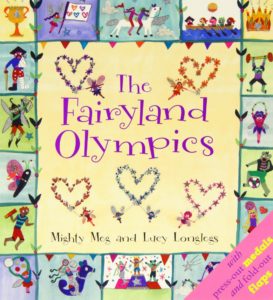
|
In Meg Clibbon and Lucy Clibbon’s The Fairyland Olympics (Zero to Ten, 2008), the denizens of the Enchanted Forest decide to hold their own version of the Olympic games, and soon all are involved, from giants and dragons to princesses, herb fairies, and gourmet goblins. The lovely illustrations feature picture maps of such Fairyland locations as the Misty Mountain, Arboreal Grotto, Swamp (for Troll dancing), and Sea Palace. An appendix has suggestions for hosting your own garden-party Olympics, instructions for making winners’ coronets, and a recipe for a healthy energy drink. For ages 5 and up. |
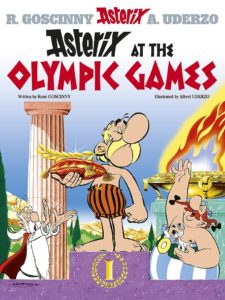
|
Rene Goscinny’s Asterix graphic series – fans of Tintin will love it – is set in Roman-occupied Gaul, with an hilarious cast of characters, among them Asterix (a small, but cunning, Gaulish warrior), his best friend Obelix (a menhir-delivery man, fond of roast boar), Getafix (the village druid), Cacofonix (the unspeakable bard), Vitalstatistix, red-bearded chief of the tribe, and a host of luckless Roman legionaries. In Asterix at the Olympic Games (Orion, 2004), all the men of the Gaulish tribe, fortified with Getafix’s strength-inducing magic potion, set off for Greece to compete in the Olympics. Their chief rival: the muscle-bound Roman, Gluteus Maximus. For ages 10 and up. |
SCIENCE, MATH, and THE OLYMPICS
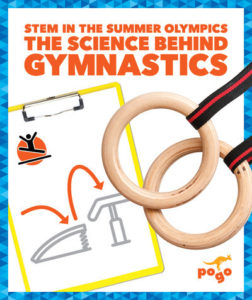 |
The STEM in the Summer Olympics series by Jenny Fretland VanVoorst (Jump!, Inc.) covers the science of summer Olympic sports for ages 6-9. Various titles include The Science Behind Volleyball, The Science Behind Cycling, The Science Behind Water Sports, and The Science Behind Gymnastics. |
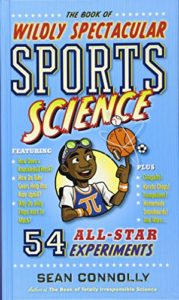
|
Sean Connolly’s The Book of Wildly Spectacular Sports Science (Workman, 2016) is a collection of great experiments for sports-loving scientists ages 9-12. Learn about everything from bouncing trampolines to flipping snowboards and flying frisbees. |
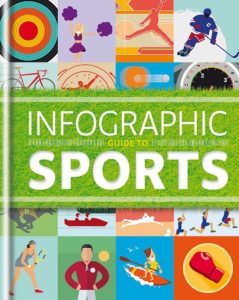 |
Daniel Tatarsky’s Infographic Guide to Sports (Cassell, 2014) is a wonderful collection of informative diagrams (starting with “If the Gold Standard Were Gold Medals.” For ages 9 and up. |
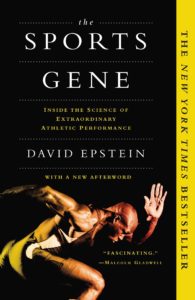 |
David Epstein’s The Sports Gene (Portfolio, 2014), subtitled “Inside the Science of Extraordinary Athletic Performance,” tackles the question of nature vs. nurture when it comes to sports. A fascinating read for teens and adults. |
| Sports: it’s all physics! See Physical Science: Forces and Motion for dozens of helpful videos and interactive projects.
|
|
| From Scientific American, Winning in the Olympics is a series of fascinating articles on the science of sports and competition. For example, learn about the neuroscience of winning, the physics of swim strokes, and the physiology of holding your breath. | |
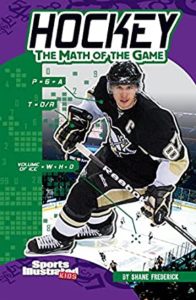 |
By Shane Frederick, Hockey: The Math of the Game (Sports Illustrated Kids, 2011) covers it all: scoring, averages, percentages, and how to calculate how much water it takes to fill an ice rink. For ages 10-14. |
| See You Tube for a long list of videos on the history and science of the Olympic Games. | |
|
From the National Science Foundation and NBC Learn, The Science of the Winter Olympics is a collection of informative videos for sports and science fans. Many titles, among them “The Science of Skis,” “The Science of Skates,” “Mathletes,” and “Science Friction.” |
|
| From NBC Learn, Science of the Summer Olympics has a series of videos exploring the engineering and technology behind the 2012 London Games. Samples: “The Biomechanics of Usain Bolt” and “Missy Franklin and Fluid Dynamics.” | |
| From the University of Cambridge, Math and Sport has Olympic-themed activities and informational articles for kids ages 5-18, categorized by sport (from Archery to Wrestling). Looks terrific. | |
| From the journal Nature, Science at the Olympics is a reader-friendly overview of the science behind the Olympic and Paralympic Games, from doping detectors to disease trackers. |
